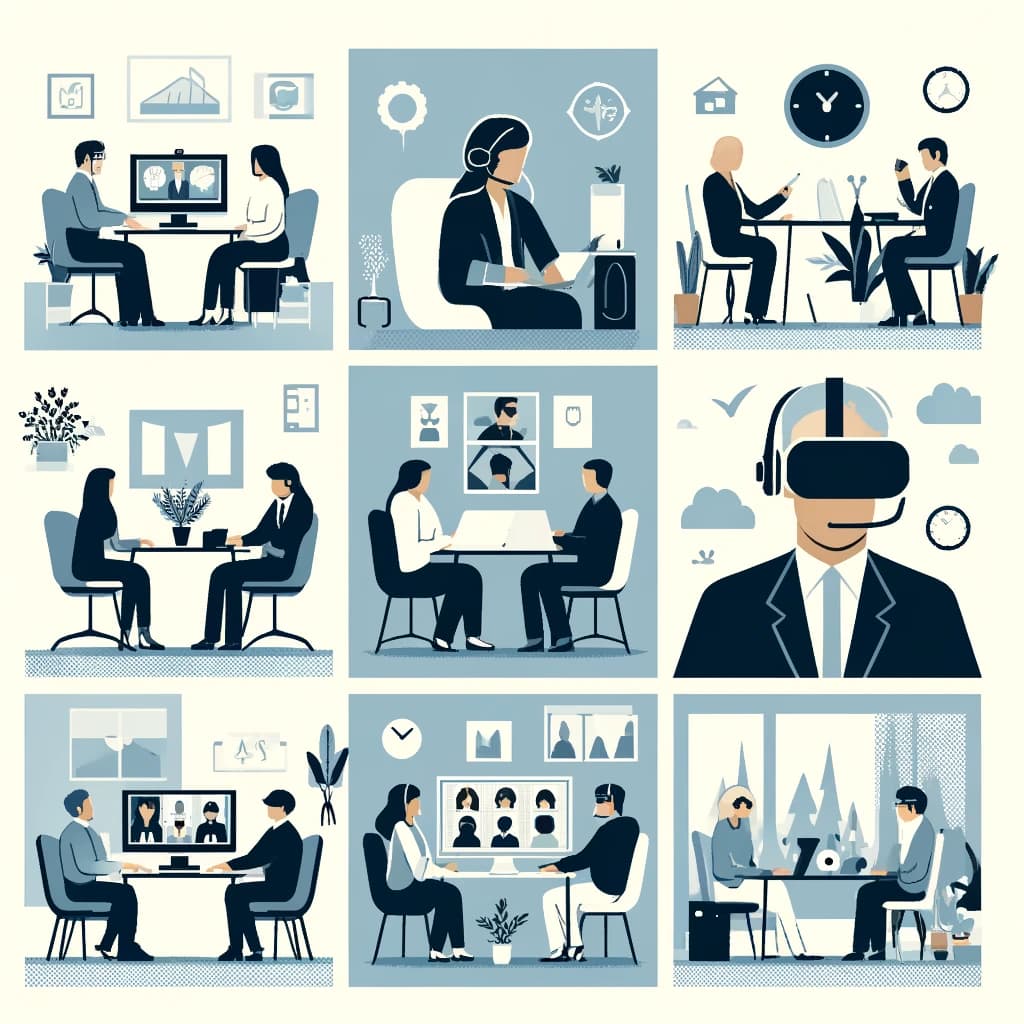The Future of Work: Embracing Hybrid Models at Scale

On May 8, 2024, we at Arthur Technologies hosted the first event in our series on hybrid work and the role of technology, featuring insightful discussions on the evolving workplace landscape. Moderated by Nolan Ether and hosted by Ricky Houck, the event drew professionals eager to explore the integration of remote and in-office work. This blog post captures the key takeaways and actionable insights from the session.
Understanding Hybrid Work
What is hybrid and how has it evolved? Hybrid work is a flexible model combining remote and in-person work. It represents a spectrum of arrangements that are neither fully remote nor entirely in-person. This model has evolved, especially post-pandemic, as organizations recognize its benefits and adapt to new work environments.
Current Trends: Recent studies, such as a Fortune article, highlight that CEOs are now conceding hybrid work is here to stay. A year ago, many expected a full return to the office by 2026, but now the majority foresee hybrid work as the way forward.

The Benefits of Hybrid Work
- Increased Productivity: Hybrid work allows employees to find the balance that works best for them, leading to higher productivity. This flexibility helps employees manage their work-life balance better and maintain focus during their most productive hours.
- Improved Employee Satisfaction: According to an Accenture report, 83% of workers prefer a hybrid model. This preference for flexibility contributes to higher job satisfaction, as employees can tailor their work schedules to their personal needs.
- Broader Talent Pools : By not limiting hires to a specific location, companies can access a wider range of talent, leading to higher quality applicants and a more diverse workforce.
- Cost Savings : Organizations save on office space and utilities, reducing overhead costs. Additionally, the environmental impact is minimized as fewer employees commute, leading to a smaller carbon footprint.
- Lower Turnover : Offering hybrid work options can reduce employee turnover, as the flexibility and autonomy provided by this model increase job satisfaction and loyalty.
Effective Hybrid Work Models: Recognizing the Human Aspect
At the core of successful hybrid work models is the recognition that employees are people first. Companies are fundamentally a collection of individuals working together to achieve common goals. Understanding and addressing the human aspects of work is crucial, especially for large global teams.
Three Types of Work:
Asynchronous Work: This allows teams to collaborate on different schedules. Not everything needs to be a 30-minute meeting; in fact, most things don't. Distributed teams spend most of their working time at different parts of the day, making asynchronous communication vital. Individual Work: Tasks that can be completed independently should be given the most flexibility. Each employee is different, and allowing them to manage their individual work according to their preferences can significantly boost productivity and satisfaction. Group Work: Meaningful connection in group activities is essential. As we spend less floating time together between tasks, intentionality in group work becomes more critical. This includes new office layouts, offsite meetings, and more engaging virtual mediums like VR.
Challenges and Solutions in Implementing Hybrid Work
Maintaining Company Culture : One of the biggest challenges of hybrid work is maintaining a strong company culture. It's crucial to create social contracts and rituals that keep employees engaged and aligned with the company’s values. This includes regular check-ins, virtual team-building activities, and clear communication of expectations.
Effective Collaboration : Hybrid work requires a shift in how teams collaborate. Companies must adopt new tools and processes to facilitate both synchronous and asynchronous work. For instance, using collaborative platforms like Slack, Miro, and virtual reality (VR) tools can enhance communication and teamwork.
Intentional Use of Office Space : The physical office should evolve to meet the needs of a hybrid workforce. Instead of traditional cubicles, offices can be redesigned to provide spaces for collaboration and innovation. This could include open areas for brainstorming, equipped with interactive tools and technology.
Change Management : Implementing hybrid work requires careful change management. Appointing champions within the organization can help drive the adoption of new practices and technologies. These champions act as advocates, providing support and training to their colleagues.

The Role of Technology in Hybrid Work
Videoconferencing is familiar to many and is used in hybrid work setups to enable communication and collaboration across different locations. Tools like Zoom, Microsoft Teams, and Google Meet facilitate virtual meetings and have been the default option for remote and in-office employees to meet and work together in a hybrid work setup. Virtual Reality (VR) is revolutionizing how teams collaborate across different environments. Platforms like Arthur allow for immersive and interactive meetings, replicating the benefits of in-person interactions in a virtual setting. This technology has many use cases including trainings, agile meetings, and visual presentations. Extended Reality (XR) technologies go a step further than VR by integrating augmented reality (AR) and mixed reality (MR) to combine the best of physical and virtual worlds, offering even more ways to collaborate and innovate. These technologies create a sense of presence and engagement, making remote work feel more connected.
Conclusion
The first event in Arthur Technologies’ series on hybrid work provided valuable insights into the benefits, challenges, and future of hybrid models. As companies continue to navigate this evolving landscape, adopting flexible work arrangements and innovative technologies will be key to success. In our second event, we discussed traditional tools like videoconferencing, innovative 2D tools for remote work, and the use of immersive technologies for the future of collaboration. Check outthis blog postfor the summary and insights. In our third event, we further explored the benefits of VR for enterprises and discussed specific use cases and industries where VR is making a significant impact. Check outthis blog postfor the summary and insights. In case you are curious to experience Arthur in action,register herefor the next Arthur event. FollowArthur Technologies on LinkedInfor regular updates and information about upcoming events.